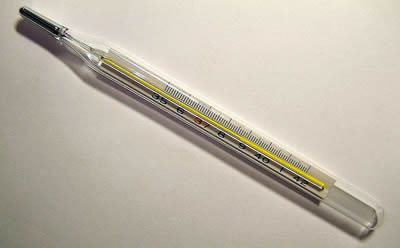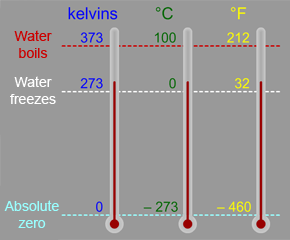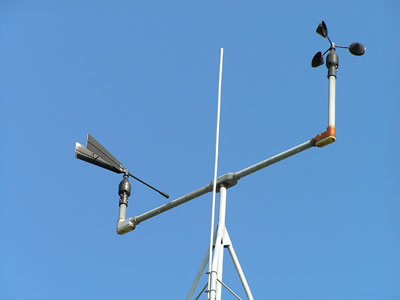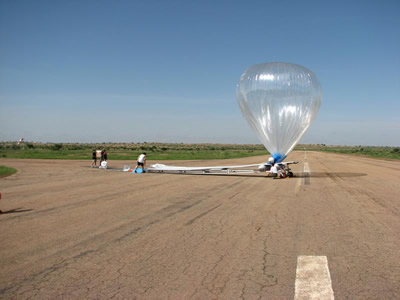Click on image for full size
Image courtesy of Wikipedia Creative Commons
Thermometer
Thermometers measure temperature. "Thermo" means heat and "meter" means to measure. You can use a thermometer to measure the temperature of many things, including the temperature of the air, the temperature of our bodies, and the temperature of the food when we cook. Temperature is a measure of the hotness and coldness of an object.
Thermometers usually have a bulb at the base and a long glass tube that extends to the top. The glass tube of a thermometer is filled with alcohol or mercury. Both mercury and alcohol grow bigger when heated and smaller when cooled. Inside the glass tube of a thermometer, the liquid has no place to go but up when the temperature is hot and down when the temperature is cold. Numbers are placed alongside the glass tube that mark the temperature when the line is at that point.
Another common type of thermometer is a "spring" or dial thermometer. A coiled piece of metal that is sensitive to heat is used. One end of the spring is attached to the pointer. As the air heats, the metal expands and the pointer moves higher. As the air cools, the metal contracts and the pointer moves lower. Typically, these type of thermometers are less accurate than bulb or digital thermometers.
Electronic thermometers are now commonly used. These thermometers measure temperature much more quickly than mercury and dial thermometers. An electronic thermometer works by putting a voltage across its metal probe and measuring how much current flows through it. If you put the probe in boiling water, the water's heat makes electricity flow through the probe less easily so the resistance goes up by a measurable amount. A microchip inside the thermometer measures the resistance and converts it into a measurement of temperature.
The thermometer measures temperatures in Fahrenheit, Celsius and another scale called Kelvin. Fahrenheit is used mostly in the United States, and most of the rest of the world uses Celsius. Kelvin is used by some scientists.














